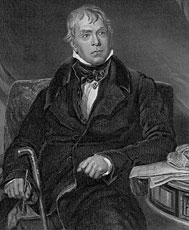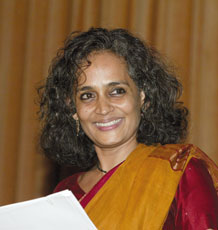The use of poems, verse, songs in contemporary novels
By Dilshan Boange
Part 3
One of the most notable qualities that can be added to the text of a
novel through the lacing of verse into its textual fabric is 'lyrical
quality'. Lyricism in a very basic way can be called the quality of
being 'poetic'. One way that such a quality can be evoked in a text is
to weave the text's threading with 'lacings' of poems and songs (either
in whole or as excerpts). Through such devices the 'texture' of the
novel can be enhanced to produce a lyrical effect upon the reader. The
inclusion of jazz lyrics excerpts would arguably add a touch of
musicality to the text of The English Patient, which is also a quality
that has been identified as a facet of lyricism. Similarly it is
probable that the two 'songs' in Coming Through Slaughter are also
lyrical devices, that seek to evoke a musically imbued effect to the
reading experience, making the novel's text more lyrically laced, and
rhythmically attuned to the theme of 'jazz.'
The God of Small Things
 |
|
Sir Wolter Scott |
 |
|
Arundhati Roy |
Moving from the works of Ondaatje to the Booker Prize winning novel
by Arundhati Roy, The God of Small Things, which has also been praised
as a richly lyrical novel, one notes how the incorporation of poems,
songs, verse stands out as a prominent feature of the novel's texture.
The range of these non-prose elements of verse, poems and songs is much
wider in terms of variety, compared to the two novels of Ondaatje
discussed in this article. The poetry, verse like elements in Roy's
début novel show a very contextual significance to the characters, and
at times give narrative enhancement to a scene, to make it seem livelier
to the reader. The types of verse, song, poem excerpts range from
Christian prayer to devotional song/verse to improvised/redone nursery
rhymes to songs sourced from film and television, as well as songs and
verse of folk origin. And this is only a very basic overview on the
matter.
On page 36 of the novel a devotional song/verse is featured that is
very much a multifaceted depiction of the characters and culture that
the story is tightly bound to. It is linked to the matter of
pronunciation (as expressly stated in the narrative of the scene) and is
written to depict how syllabic disjointing happens when the character(s)
sing it. This 'car song' (as the author has called it in the story) is
an example of how English speech can have Indian dialectical influences
in a community that is essentially speakers of Malayalam. While this
piece of verse/song adds a certain sense of 'colour' (if one may use the
expression), to the story's narrative, it also performs a very valuable
function in terms of cultural expressionism, depicting phonologically
how speech patterns of the characters may be grasped by the reader.
Quoting Scott for an Indian purpose
Like Ondaatje quotes from Milton, Roy too incorporates text excerpts
from classic English literature when a poem by Sir Walter Scott is
recited, by the character of a girl named Latha, which the novel
describes as a girl of twelve or thirteen. The poem "Lochinvar" by Scott
does not seem to have the same roles in Roy's novel, as the excerpt from
Paradise Lost has in The English Patient. The excerpt from "Lochinvar",
like certain verse elements that appear before, depict the syllabic
disjointing that occur in what can be assumed as typical 'Indian
English' spoken in the southern parts. Therefore it is far from
performing the role of adding a touch of classicalness to the text, from
a point of embellishing the narrative, with English literary works of
the masters. It is more a textual depiction of lingual shadings of an
Indian community's vernacular productions.
Nursery rhymes and the child's psyche
Another interesting facet on this line of discussion is how
improvised or 'reformulated' nursery rhymes are composed by the children
in the story. One example is on page 96 where the character of Rahel
conjures in her head, her own version of 'Rubadub dub three men in a
tub,' to suit the situation she is in. A device like this can be a
window to the thinking ground of a child, in a very effective way.
Through this sort of device the reader is allowed insight on the way in
which song and verse inhabit the consciousness of children (like
adults), and how they would be rendered in the juvenile mind, in
accordance with given situations. A similar instance of how to read the
link with the young mind and verse and song comes in a scene found
between pages 211-212, where a humorous rhyme that sees to could be of
provincial folksy origin is featured.
Hey Mr Monkey Man
Why's your BUM so RED?
I went for a SHIT to Madras
And scraped it till it BLED!
Songs and verse
Along the lines of viewing the poem, verse and song extracts in the
novel as channels to develop a cultural study of the novel, is another
noteworthy element that Roy has featured in the scene narrated from page
219-220. The scene is where the character of Ammu and the twins Rahel
and Estha, listen to a song on the radio and softly sing along. The song
is described as one that tells a sorrowful tale of a fisherman and his
wife. The song is presented (textually), as interspersed with the prose
narrative, written in English script/characters, but represents the
Indian wording, where the meaning as a translation is given in
parentheses under each line. This approach by Roy makes space for a
subtext, where the English language reader is not excluded from grasping
the meaning/content of the song, but is also made to focus on the
original wording of the Indian song from a point of phonology (providing
the characters used to represent the Indian words accurately achieve the
intended purpose). Therefore this device in particular seems to be a
mechanism to promote and depict the cultural ethos of the Malayalam
community in which the novel is set.
Considering this function that is very likely to make an impact on
the reader in respect of the Malayalam dialect, it is also noteworthy
how on page 285 a four line poem about a train (taught in school to
small children) is featured, written in English script representing
Indian language wording. However, unlike the fisherman's song, this one
does not have its meaning presented in parentheses, and thereby one may
reasonably deduce that its meaning is less important to the novel's
narrative compared to the fisherman's song.
These elements seem to serve as devices that impress upon the reader
the author's views of how best to capture the ethos of the community in
which the story is set both in terms of events and the vernacular
aspects involved.
A touch of the cinematic
The final point that is focused on in this article is, how the lyrics
excerpted from the song "How do you solve a problem like Maria?" from
the popular Hollywood musical classic 'The Sound of Music,' is
interspersed in the narrative of a scene in The God of Small Things.
From pages 99-101, lines from the song are presented in italicized lines
as single lines and couplets, woven in to the scene's prose narrative.
The scene is at the cinema, and the author's narrative generates what
seems a very lively illustration of the events that unfold in the story.
The fact that the song lyrics are presented in the text, could make the
reader feel that a certain sense of the 'film's narrative', is being
evoked by the text, in a manner that is more than mere reference and
description.
The fact that the narrative includes these lines, interspersed with
the novel's prose narrative, keeps the reader attuned to the switch of
focus that would actually happen when a group of people are 'at the
movies.' In this sense it is possible that Roy attempts to cover a wider
consciousness of the moment, depicted in the scene, with the inclusion
of the song (represented through lyrics) that the characters are
watching, while creating a more enchanting experience to the reader.
The use of non-prose elements such as poetry verse and song lyrics in
a novel can perform a multitude of functions with many intents and
purposes, which the author may have had in mind when crafting the fabric
of the novel.
The developments that take place rapidly in the contemporary 'Modern
novel' present a wide scope to writers, to experiment how to make
better, cultural, ideological communication through the channel of
literature. And it must not be forgotten that lacings of verse in to
prose can richly serve the purpose of beautification of a literary
texture, which is one of the primary aesthetic goals that literature
could hope to achieve.
|

